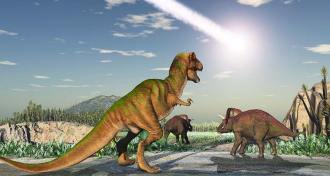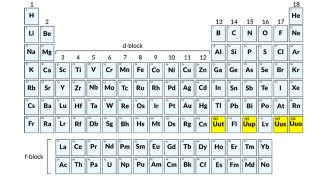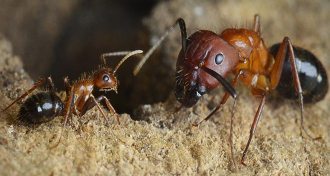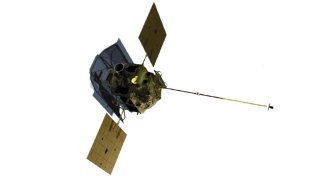All Stories
-
 Physics
PhysicsThe science of avalanches
High-tech instruments are helping researchers study how temperature can change the character — and danger — of an avalanche
-
 Physics
PhysicsHalo of light crowns Antarctica
Ice crystals in the air bend sunlight into a ring over a research base in eastern Antarctica.
-
 Particle Physics
Particle PhysicsDark matter helped destroy the dinosaurs, physicist posits
In ‘Dark Matter and the Dinosaurs,’ Lisa Randall finds connections between particle physics, cosmology, geology and paleontology.
By Andrew Grant -
 Chemistry
ChemistryFour elements earn permanent seats on the periodic table
The four newest elements on the periodic table gain official recognition and will be getting new names soon.
By Andrew Grant -
 Animals
AnimalsAnts’ size and profession controlled by chemical tags on DNA
Epigenetic marks determine whether female Florida carpenter ants are soldiers or foragers.
-
 Astronomy
Astronomy‘Bones’ in Milky Way could help map galactic structure
Six newly discovered tendrils of interstellar gas might be “bones” of the Milky Way that could help researchers understand the scaffolding of our galaxy.
-
 Astronomy
AstronomyThis white dwarf is hotter than the rest
A new record holder for hottest white dwarf sizzles at about 250,000˚ Celsius.
-
 Paleontology
Paleontology12 amazing fossil finds of 2015
From an ancient sponge ancestor to the Carolina Butcher, scientists learned a lot about life on Earth this year.
By Meghan Rosen -
 Psychology
PsychologyAs suicide rates rise, researchers separate thoughts from actions
Advances in suicide research and treatment may depend on separating thoughts from acts.
By Bruce Bower -
 Astronomy
AstronomyAstronomical milestones of 2015
The New Horizons mission to Pluto was the No. 1 science story of the year. Here some other notable space missions.
-
 Animals
AnimalsLemurs chat only with their best friends
Ring-tailed lemurs maintain friendships built with grooming by calling to each other, a new study finds.
-
 Science & Society
Science & SocietyScience puzzles no longer so puzzling
This year, researchers solved the riddle of mysterious radio bursts, the Erdös discrepancy problem and an elusive acid.